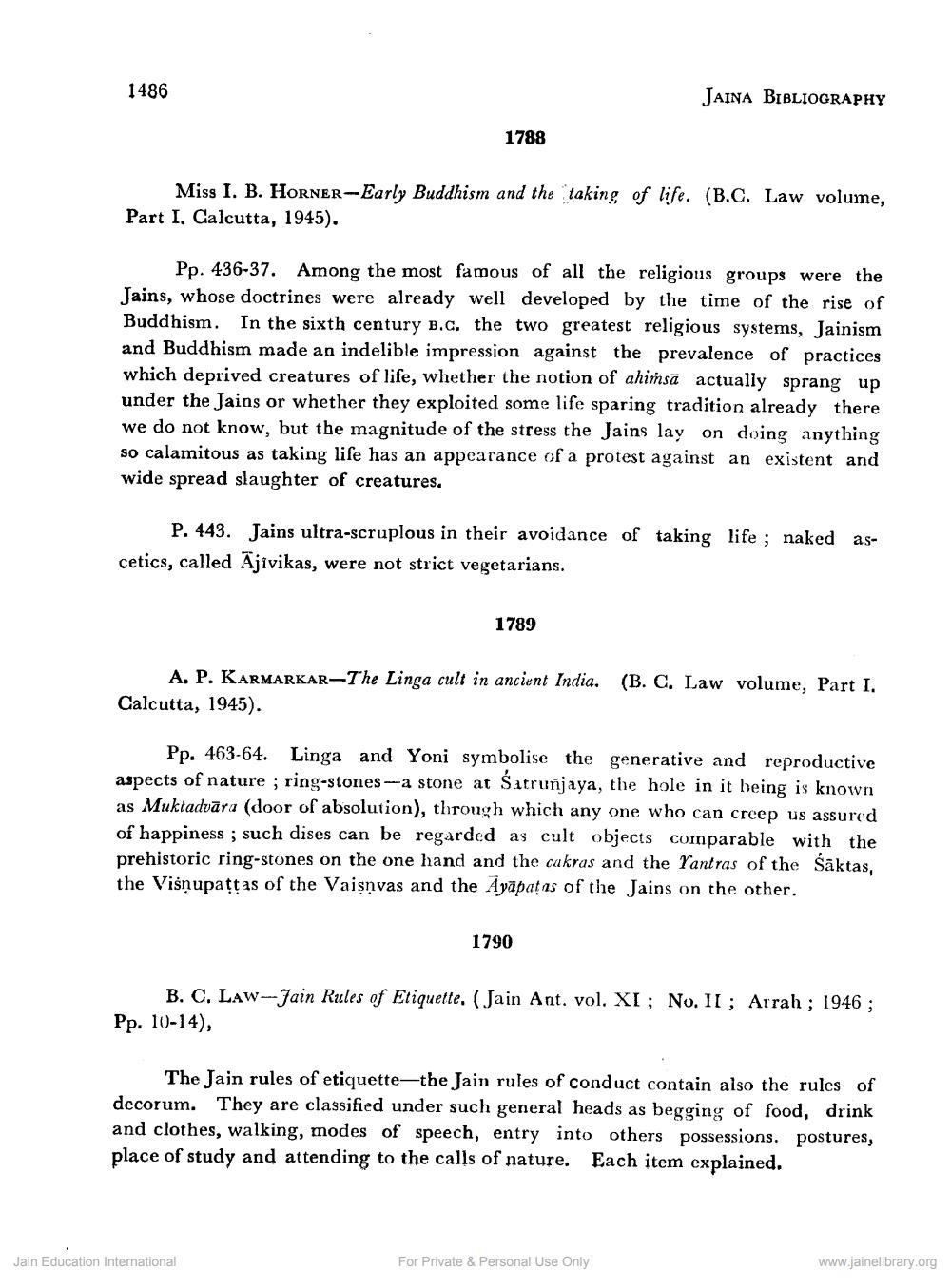________________
1486
1788
Miss I. B. HORNER-Early Buddhism and the taking of life. (B.C. Law volume, Part I. Calcutta, 1945).
Pp. 436-37. Among the most famous of all the religious groups were the Jains, whose doctrines were already well developed by the time of the rise of Buddhism. In the sixth century B.C. the two greatest religious systems, Jainism and Buddhism made an indelible impression against the prevalence of practices which deprived creatures of life, whether the notion of akimua actually sprang up under the Jains or whether they exploited some life sparing tradition already there. we do not know, but the magnitude of the stress the Jains lay on doing anything so calamitous as taking life has an appearance of a protest against an existent and wide spread slaughter of creatures.
P. 443. Jains ultra-scruplous in their avoidance of taking life; naked as cetics, called Ajivikas, were not strict vegetarians.
JAINA BIBLIOGRAPHY
1789
A. P. KARMARKAR-The Linga cult in ancient India. (B. C. Law volume, Part I. Calcutta, 1945).
Pp. 463-64. Linga and Yoni symbolise the generative and reproductive aspects of nature; ring-stones-a stone at Satruñjaya, the hole in it being is known as Muktadvāra (door of absolution), through which any one who can creep us assured of happiness; such dises can be regarded as cult objects comparable with the prehistoric ring-stones on the one hand and the cakras and the Yantras of the Saktas, the Visnupattas of the Vaisnvas and the Ayapatas of the Jains on the other.
Jain Education International
1790
B. C. LAW-Jain Rules of Etiquette, (Jain Ant. vol. XI; No. II; Arrah; 1946 ; Pp. 10-14),
The Jain rules of etiquette-the Jain rules of conduct contain also the rules of decorum. They are classified under such general heads as begging of food, drink and clothes, walking, modes of speech, entry into others possessions. postures, place of study and attending to the calls of nature. Each item explained.
For Private & Personal Use Only
www.jainelibrary.org




